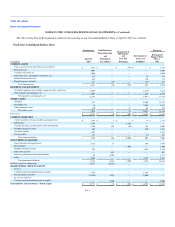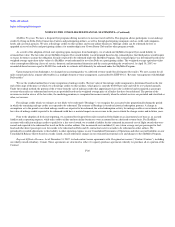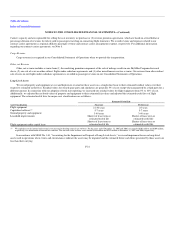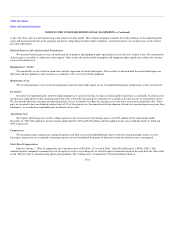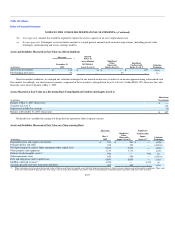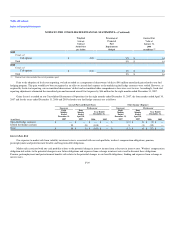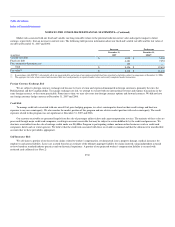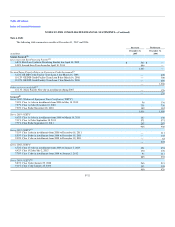Delta Airlines 2007 Annual Report Download - page 84
Download and view the complete annual report
Please find page 84 of the 2007 Delta Airlines annual report below. You can navigate through the pages in the report by either clicking on the pages listed below, or by using the keyword search tool below to find specific information within the annual report.
Table of Contents
Index to Financial Statements
NOTES TO THE CONSOLIDATED FINANCIAL STATEMENTS—(Continued)
at fair value. Fair value was determined using a discounted cash flow model. This valuation technique considers the creditworthiness of the underlying debt
issuer and insurance protection of the principal and interest. Depending on future market conditions, our insured auction rate securities may result in future
fair value adjustments.
Deferred Gains on Sale and Leaseback Transactions
We amortize deferred gains on the sale and leaseback of property and equipment under operating leases over the lives of these leases. The amortization
of these gains is recorded as a reduction to rent expense. Gains on the sale and leaseback of property and equipment under capital leases reduce the carrying
value of the related assets.
Manufacturers' Credits
We periodically receive credits in connection with the acquisition of aircraft and engines. These credits are deferred until the aircraft and engines are
delivered, and then applied on a pro rata basis as a reduction to the cost of the related equipment.
Maintenance Costs
We record maintenance costs in aircraft maintenance materials and outside repairs on our Consolidated Statements of Operations as they are incurred.
Inventories
Inventories of expendable parts related to flight equipment are carried at moving average cost and charged to operations as consumed. An allowance for
obsolescence is provided over the remaining useful life of the related fleet for spare parts expected to be available at the date aircraft are retired from service.
We also provide allowances for parts currently identified as excess or obsolete to reduce the carrying costs to the lower of cost or net realizable value. These
parts are assumed to have an estimated residual value of 5% of the original cost. In connection with our adoption of fresh start reporting upon emergence from
bankruptcy, we recorded our expendable parts inventories at fair value.
Advertising Costs
We expense advertising costs as other selling expenses in the year incurred. Advertising expense was $121 million for the eight months ended
December 31, 2007, $51 million for the four months ended April 30, 2007 and $150 million and $164 million for the years ended December 31, 2006 and
2005, respectively.
Commissions
We record passenger commissions in prepaid expenses and other on our Consolidated Balance Sheets when the related passenger tickets are sold.
Passenger commissions are recognized in operating expense on our Consolidated Statements of Operations when the related revenue is recognized.
Stock-Based Compensation
Effective January 1, 2006, we adopted the fair value provisions of SFAS No. 123 (revised 2004), "Share Based Payment" ("SFAS 123R"). This
standard requires companies to measure the cost of employee services in exchange for an award of equity instruments based on the grant-date fair value of the
award. The fair value is estimated using option-pricing models. The resulting cost is recognized over the period during which an
F-24



